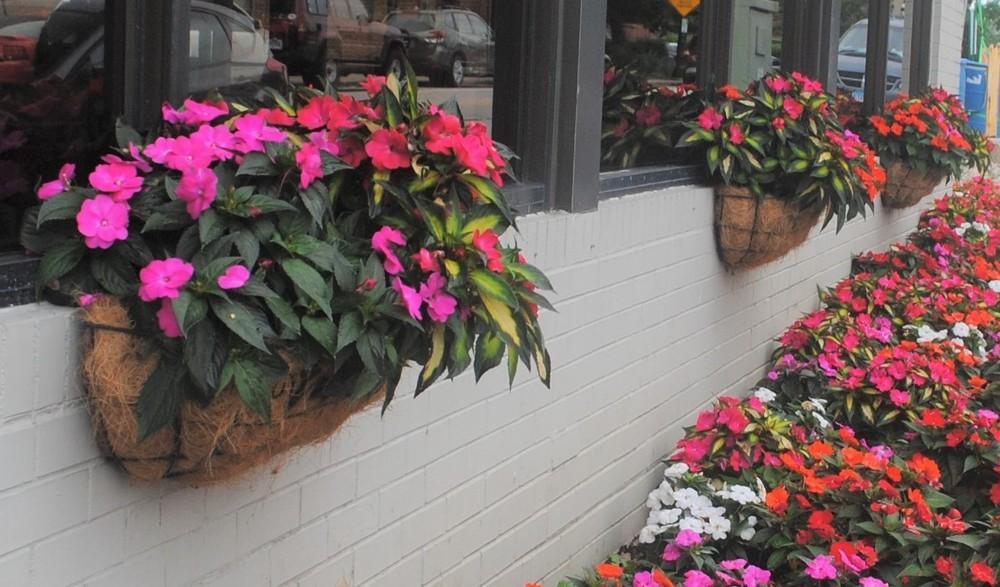Annuals — plants that sprout, bloom, set seeds, and die in one growing season -- provide some of the brightest and most reliable colors in the landscape. Often called bedding plants, you can use annuals in containers, flower and vegetable gardens, or any other place you want to introduce some color.

Purchase robust seedlings. Choose plants with unopened flower buds instead of those in full bloom. Plants should fill their pots well, have bright green color on their leaves, and show no evidence of insects or disease.
Acclimate plants to outdoors. Give plants grown indoors or in a greenhouse about 7 to 10 days of acclimation to outside wind and sun exposure before planting them directly in the ground. Put the potted plants outdoors in a sheltered spot away from strong wind and direct sun at first. Each day or two, move them to a somewhat more exposed situation. Bring them inside if frost threatens.
Plants acclimated at the nursery don't need this treatment and can be planted directly into the garden.
Prepare the planting bed. Loosen the soil with a garden fork and incorporate 1 to 2 inches of organic material, such as compost or composted manure, and a complete granular fertilizer, following package recommendations. Rake smooth. Water the garden thoroughly the day before planting to moisten the soil.
Planting time. Water plants a few hours before planting. Meanwhile, determine the amount of space needed between plants by reading the label or catalog. Plants should barely touch when mature.
Scoop a hole in the prepared soil that's slightly larger than the pot size. Slip plants from pots by tipping the pot over your hand and tapping, squeezing, or pressing on the bottom. Do not pull on the stem. Gently untangle any circling roots with your fingers. Set the plant in the hole at the same depth as the plant grew in its pot and spread the roots. Fill the hole and lightly firm the soil around the roots.
Water and mulch. Immediately after planting, water the garden with a gentle spray to settle the soil. Add additional soil around any exposed roots. Apply a 2- to 3-inch layer of mulch, such as pine needles, shredded bark, or seed hulls, after the plants resume active growth.
Tips
Plant annuals in large blocks of single colors or varieties, instead of single-file rows, for the most dramatic effect.
Pinch the growing tip out of tall-growing plants to encourage branching and shorter growth. This method may result in smaller but more plentiful flowers.
Remove spent flowers -- called deadheading -- to keep annuals blooming throughout the season. Once they set seeds, most annuals stop producing flowers.